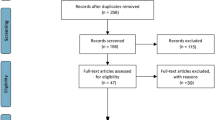Abstract
Background
Fibrin sealant application in rhytidectomy has previously demonstrated a reduction in adverse events and drainage volume. Fibrin sealant offers multiple potential benefits including decreasing downtime, reducing complication rates, and improving patient satisfaction. In this study, we evaluated the efficacy and safety of ARTISS [fibrin sealant (human)] in external rhinoplasty.
Methods
Nine healthy participants between the ages of 18 and 50 seeking external rhinoplasty completed this study. All subjects were randomized into control and treatment groups and then underwent external rhinoplasty, with only the treatment group receiving ARTISS [fibrin sealant (Human)] during surgery. Photographs were taken before surgery and 1 day, 1 week, 1 month, 3 months and 6 months after surgery and used in a blinded assessment of recovery time and esthetic improvement with ecchymosis and satisfaction scales. Subject recovery time, downtime, and self-esteem were evaluated at 1 day, 1 week, 1 month and 6 months after surgery. Recovery time was determined by live assessment of edema and ecchymosis using categorical scales. Subject downtime was assessed through a 30-day patient diary and a downtime questionnaire. Subject self-esteem was evaluated with the Heatherton & Polivy State Self-Esteem Scale. The degree of technical ease with the product was determined by the treating investigator with a 10-cm Visual Analog Scale.
Results
Patients treated with ARTISS intra-operatively reported significantly higher self-esteem 1 month and 6 months following external rhinoplasty. The ARTISS Easyspray™ Spray Set was rated as technically easy to administer.
Conclusion
The use of ARTISS fibrin sealant in external rhinoplasties is a safe and easy method and may enhance patient self-esteem. Larger studies are warranted to either verify or challenge the validity of our findings.
Level of Evidence IV
This journal requires that authors assign a level of evidence to each article. For a full description of these Evidence-Based Medicine ratings, please refer to the Table of Contents or the online Instructions to Authors www.springer.com/00266.




Similar content being viewed by others
References
ARTISS [Fibrin Sealant (Human)] (2012) [product insert]. Baxter Healthcare Corporation. Westlake Village
Roderick H, Krishnan S, Abrams SZ (2011) Qualitative comparison of patient and investigator preferences following the use of fibrin sealant to adhere tissues and improve wound healing in patients undergoing rhytidectomy. Plast Reconstr Surg 128(4S):105
Rohrich RJ, Shire JR, Desmond JC et al (2011) ARTISS improves flap adherence following rhytidectomy through full surface adherence between the wound bed and applied tissue which eliminates areas of dead space often associated with hematoma and seroma: results of a phase 3, multicenter, prospective, randomized clinical study. Paper presented at American association of plastic surgeons (AAPS) 90th Annual Meeting, Boca Raton, FL, 9–12 Apr 2011
ARTISS [Solutions for Sealant] (2011) Summary of product characteristics. Baxter International Inc, Vienna
Mustoe TA et al (2011) Reduced hematoma/seroma occurrence with use of fibrin sealant during facial rhytidectomy: results of an integrated analysis of phase 2 and phase 3 study data. Oral presentation at ASPS meeting 2011, Denver Colorado, 23–27 Sept
ASPS (2016) Plastic surgery statistics report [Internet]. National Clearinghouse of Plastic Surgery Procedural Statistics. 2016; https://www.plasticsurgery.org/documents/News/Statistics/2016/plastic-surgery-statistics-full-report-2016.pdf. Accessed 24 Sept 2017
Tardy ME (1997) Rhinoplasty: the art and the science. Saunders Company, Philadelphia
Simons RL (2004) A personal report: emphasizing the endonasal approach. Facial Plast Surg Clin 12(1):15–34
Dayan S, Kanodia R (2009) Has the pendulum swung too far? Trends in the teaching of endonasal rhinoplasty. Arch Facial Plast Surg 11(6):414–416
Dayan SH, Ashourian N (2016) Polydioxanone absorbable plate for cartilaginous grafting in endonasal rhinoplasty a randomized clinical trial. JAMA Facial Plast Surg 18(1):47–53. https://doi.org/10.1001/jamafacial.2015.1492
Boccieri A, Raimondi G (2008) The lateral crural stairstep technique: a modification of the Kridel lateral crural overlay technique. Arch Facial Plast Surg 10(1):56–64
Ribeiro JS, da Silva GS (2007) Technical advances in the correction of septal perforation associated with closed rhinoplasty. Arch Facial Plast Surg 9(5):321–327
Stucker FJ, Burningham AR (2006) Rhinoplasty techniques: a historical perspective and survey of 8155 single surgeon cases. Arch Facial Plast Surg 8(5):341–345
Gunter JP (1997) The merits of the open approach in rhinoplasty. Plast Reconstr Surg 99:863–867
Smith O, Goodman W (1993) Open rhinoplasty: its past and future. J Otolaryngol 22(1):21–25
Aiach G (2003) Atlas of rhinoplasty open and endonasal approaches, 2nd edn. MO Quality Medical Publishing Inc, St. Louis, p 14
Heatherton TF, Polivy J (1991) Development and validation of a scale for measuring state self- esteem. J Pers Soc Psychol 60(6):895–910
Hester TR, Gerut Z, Shire J et al (2013) Exploratory, randomized, controlled, phase 2 study to evaluate the safety and efficacy of adjuvant fibrin sealant VH S/D 4 S-Apr (ARTISS) in patients undergoing rhytidectomy. Aesthet Surg J 33(3):323–333
Pavri S, Zhu VZ, Steinbacher DM (2016) Postoperative edema resolution following rhinoplasty: a three-dimensional morphometric assessment. Plast Reconstr Surg 138(6):973e–979e
Button KS, Loannidis JP, Mokrysz C et al (2013) Power failure: why small sample size undermines the reliability of neuroscience. Nat Rev Neurosci 14(5):365–376. https://doi.org/10.1038/nrn3475.epub Erratum. In: Nat Rev Neurosci 14(6):451
Eppley BL, Pietrzak WS, Blanton M (2006) Platelet-rich plasma: a review of biology and applications in plastic surgery. Plast Reconstr Surg 118(6):147e–159e
Acknowledgements
Financial disclosure: This study was supported by a Grant (BS12-000858) from Baxter Healthcare Corporation to S.H. Dayan. S.H. Dayan received equipment, materials or medications for this study, and received funding to support research for this article from Baxter Healthcare Corporation. The other authors have no financial interests, relationships and affiliations relevant to the subject of this manuscript.
Author information
Authors and Affiliations
Corresponding author
Rights and permissions
About this article
Cite this article
Dayan, S.H., Bacos, J.T., Ho, TV. et al. A Pilot Study Evaluating the Efficacy and Safety of ARTISS Human Fibrin Sealant in External Rhinoplasty. Aesth Plast Surg 42, 590–597 (2018). https://doi.org/10.1007/s00266-017-1039-0
Received:
Accepted:
Published:
Issue Date:
DOI: https://doi.org/10.1007/s00266-017-1039-0




